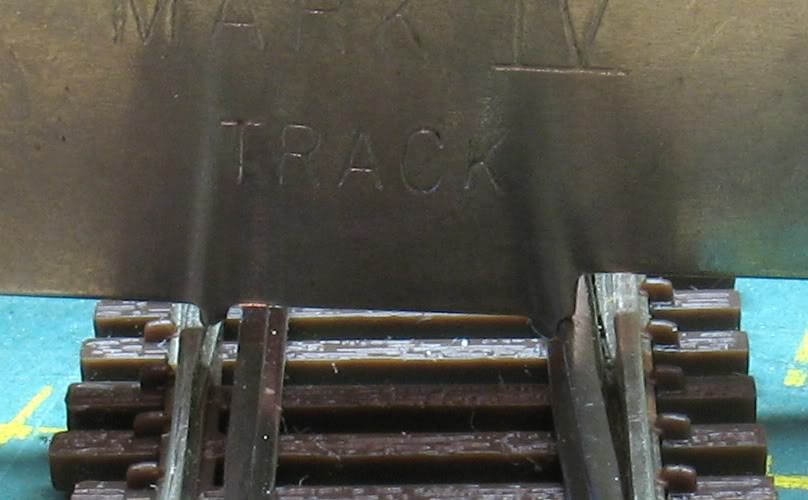Elegant solution. I'm assuming that's a #10 turnout in the photo. Have you done this with a #7 and/or #5?
John C.
This.
I love the idea of solid rails with no hinge, but on a #7 or #5, I would expect that over time, the flexing of those soldered joints
on the moving rails is going to cause the solder joints to break. On a long #10, it might work, but I would have big worries
on shorter turnouts. Have you got any feeling for the longevity on shorter turnouts? (i.e. maybe just operate
one back and forth and see how many times you can throw it before a solder joint breaks).
One thing you can do is drill a tiny #78 hole (about) right through the lower "heel" of the rail into the PC board tie, and insert a short length of brass or phosphor bronze wire through it, and *then* solder. Having a mechanical
fastening in the joint makes all the difference because it keeps the solder from flexing and breaking. I did that on a soldered
throwbar that kept breaking off from the point rails after a number of operations. After inserting the wire, it never broke again.
... and now, back to Ed's original topic, which was to compile things that should be done to Atlas 55 turnouts before installing them.
Ed, I don't know how amenable folks will be to what I do to my turnouts, but ....
1. I've had so many of those contact bars under the turnout be bad right out of the package that I will never trust them, or the frog contact strip either. So I Dremel out a little groove in the ties underneath and bypass all those bars with wire.
2. I also drill directly into the frog from underneath and solder a wire right to it, rather than depend on that contact strip.
3. Ditto for soldering wires around the point rail hinges (solder from underneath to the stationary rail and moving rail).
(if you don't go with the solid-rail replacement suggested by Mark W.)
Gauge:
4. I know, I know... people are probably tired of hearing this from me because they seem to get their turnouts
to work just fine out of the package, but nearly every darn Atlas #7 and #5 I've ever bought, from multiple sources over multiple
years, has point rails that are far too narrow. So patience and a lot of swipes of a file are needed to file away the insides
of the rail to open up the gauge a little. It is bad enough that properly-gauged steam engines climb right up out of the
rails. I don't think I have ever had the problem with a 4-axle diesel, but then, the wheels are smaller in diameter
and the wheelbase of the trucks is so short that they are much more forgiving of tight rails than, say, a 4-8-4.
What does this mean for you, Ed? Well, if you're only going to run 4-axle diesels, you can probably leave the gauge
alone. But don't say I didn't warn you. I can file the rails once the turnout is installed, but it's no fun.
My oft-seen photo on the subject (you would file some off the inside of the far-left stationary rail to fix this):
